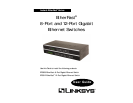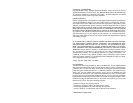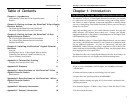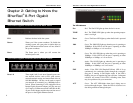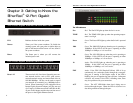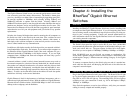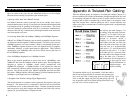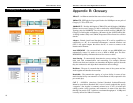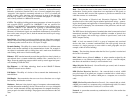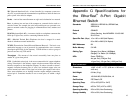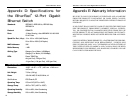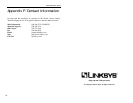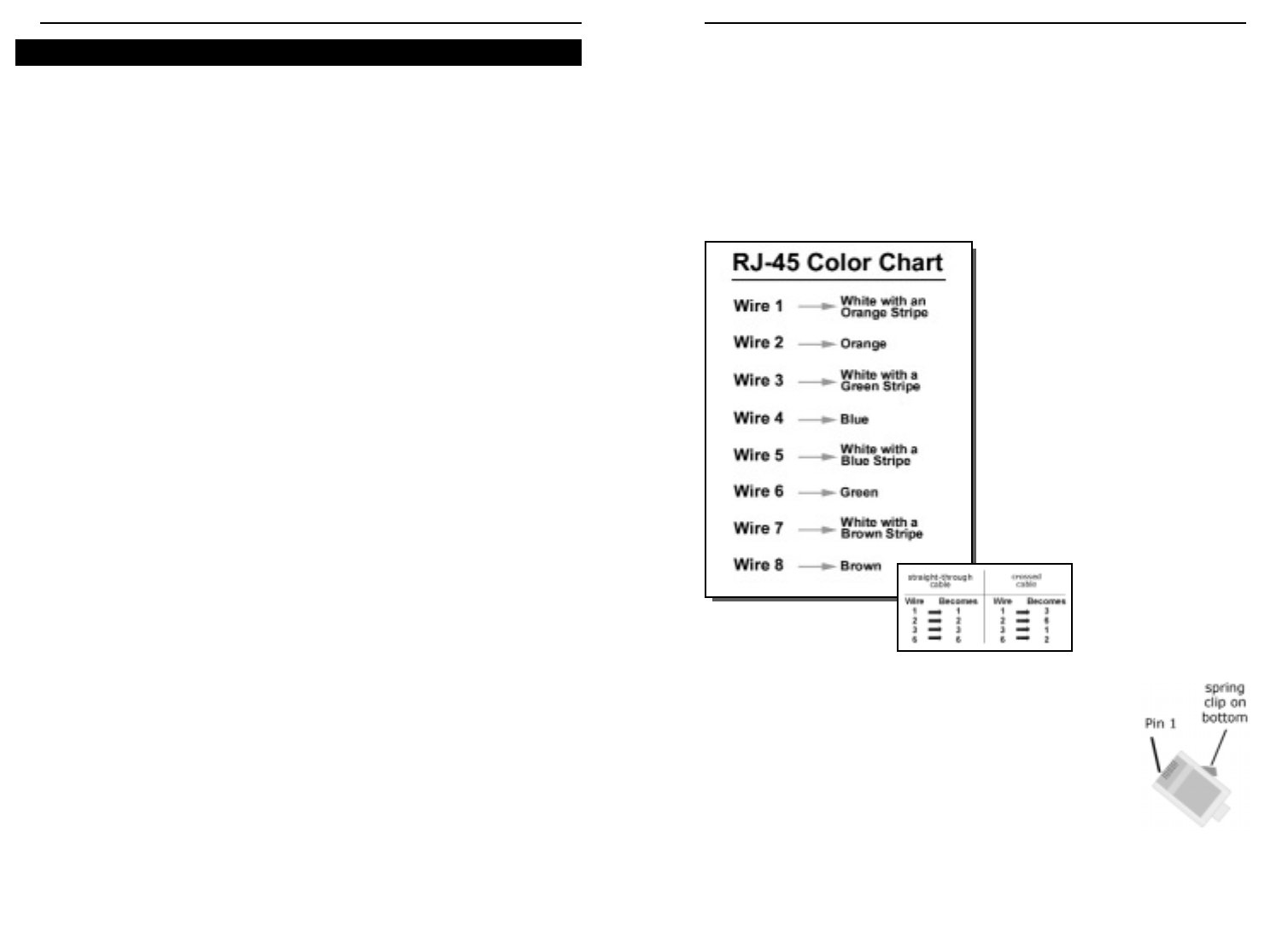
EtherFast
®
8-Port and 12-Port Gigabit Ethernet Switches
98
Appendix A: Twisted-Pair Cabling
There are different grades, or categories, of twisted-pair cabling. Category 5 is
the most reliable and is highly recommended. Straight-through cables are used
for connecting computers to a hub or switch. Crossover cables are used for con-
necting a hub or switch to another hub or switch (there is an exception: some
hubs and switches have a built-in uplink port that is crossed internally; this
allows you to link or connect hubs or switches together with a straight-through
cable instead).
You can buy pre-made Category 5 or
5e cabling, or cut and crimp your own.
Category 5 or 5e cables can be pur-
chased or crimped as either straight-
through or crossover. Inside a
Category 5 or 5e cable are eight thin,
color-coded wires that run from one
end of the cable to the other. All eight
wires are used. In a straight-through
cable, wires 1, 2, 3, and 6 at one end of
the cable are also wires 1, 2, 3, and 6
at the other end. In a crossover cable,
the order of the wires change from one
end to the other: wire 1 becomes 3,
and 2 becomes 6. See the diagrams on
the next page for more
detailed information on
straight-through and
crossover cabling.
To determine which wire is wire number 1, hold the cable so
that the end of the plastic RJ-45 connector (the part that goes
into a wall jack first) is facing away from you. Face the clip
down so that the copper side faces up (the springy clip will
now be parallel to the floor).When looking down on the cop-
per side, wire 1 will be on the far left.
Tips on Switching Your Network
Here are some of the ways the new EtherFast® 8-Port or 12-Port Gigabit
Ethernet Switch can help you optimize your network speed.
• Speed up Nodes from Your 10BaseT Network
In a 10BaseT network, connect your hubs, file servers, and key users, such as
network administrators, directly to your Switch to channel dedicated bandwidth
in full-duplex mode (if operating in full-duplex) to each station. The Switch
will have dedicated communication with all its connections simultaneously,
whereas a hub will only communicate in half-duplex transfer mode and broad-
casts information to all ports.
• Conserving Bandwidth with 10Mbps, 100Mbps and 1000Mbps Segments
10BaseT and 100BaseTX hardware are not readily compatible, but the Switch
can designate network segments of different speeds. This allows you to run one
100Mbps segment to serve users without a need for considerable speed, and a
faster 1000Mbps segment devoted to users who depend heavily on graphics,
multimedia, database, or other speed-intensive applications. With switched
segmentation, your 1000Mbps users will not be slowed down by the users on
the 10/100Mbps segment.
• Run 10/100Mbps Peripherals in a 1000Mbps Network
Most of the network peripherals in place today run at 10/100Mbps, since
100BaseTX has been the standard network speed to date. These peripherals,
designed to operate at 100Mbps, cannot readily communicate with
1000BaseTX equipment. A 10Mbps interface is also required for cable and
DSL connections, which are quickly becoming very popular ways to access the
Internet. The Switch provides your 10BaseT equipment and cable and DSL
lines with a 10Mbps interface while still running your Fast Ethernet devices at
100Mbps or your Gigabit devices at 1000Mbps.
• Strengthen Data Transfers through Signal Regeneration
The Switch functions as a repeater, which regenerates data signals as they pass
through it. This feature acts as a safeguard to deter data loss and ensure that
transmissions arrive at their destination intact. Switches positioned between
hubs can preserve your data’s integrity and eliminate your need to buy and use
repeaters in your Fast Ethernet or Gigabit network.
Tips on Switching Your Network
Instant EtherFast
®
Series



